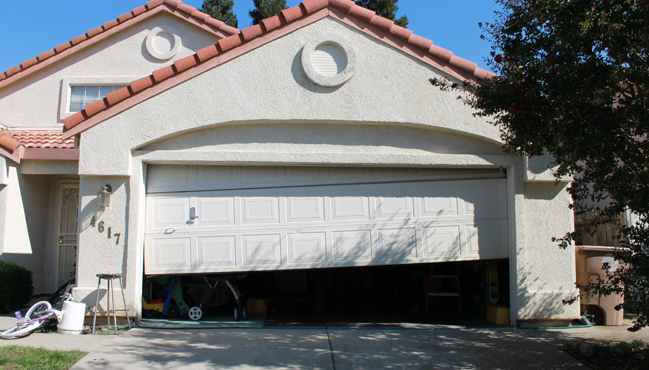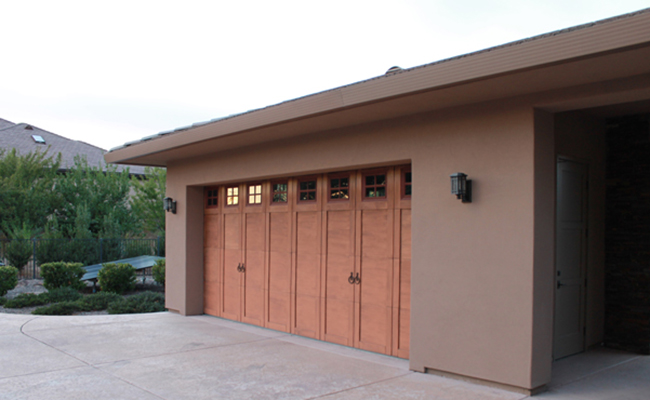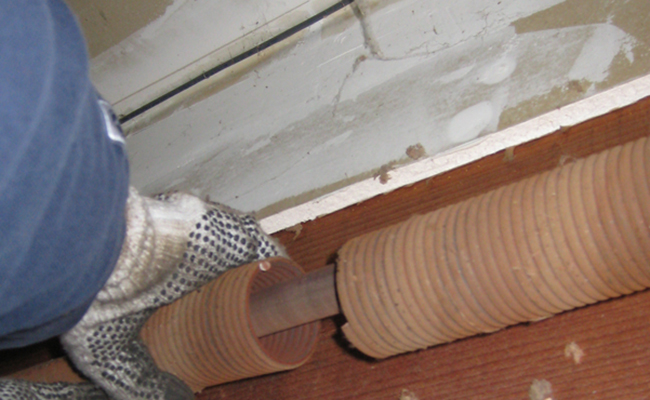A well-insulated garage door can make a significant difference in the comfort and energy efficiency of your home. Whether your garage is attached to your house or a separate structure, insulation helps regulate the temperature inside, keeping it cooler in the summer and warmer in the winter. This not only makes your garage more comfortable to use year-round but also reduces the strain on your heating and cooling systems, leading to lower energy bills. In this ultimate guide, we’ll explore the benefits of garage door insulation, the types of insulation available, and how to choose and install the right insulation for your garage door.
For many homeowners, the garage is more than just a place to park the car—it’s a workspace, storage area, or even an extension of the living space. Without proper insulation, your garage can become uncomfortably hot or cold, limiting its usability. By investing in garage door insulation, you can transform your garage into a more functional and energy-efficient part of your home.
The Benefits of Garage Door Insulation
- Energy Efficiency: Insulating your garage door helps maintain a consistent temperature inside the garage, reducing the amount of energy needed to heat or cool the space. This is especially important if your garage is attached to your home, as the temperature in the garage can affect the adjacent rooms. By preventing heat transfer through the garage door, you can lower your energy consumption and save on utility bills.
- Improved Comfort: If you use your garage as a workshop, gym, or recreational space, insulation can make it much more comfortable to spend time there, regardless of the weather outside. Insulated garage doors help block out extreme temperatures, making the garage more pleasant to use throughout the year.
- Noise Reduction: An insulated garage door can also reduce noise from outside, creating a quieter environment inside the garage. This is particularly beneficial if you live in a busy area or use noisy equipment in your garage. The insulation helps dampen sound, making your garage a more peaceful space.
- Increased Durability: Insulated garage doors are typically stronger and more durable than non-insulated ones. The added layers of insulation reinforce the door, making it more resistant to dents, warping, and other damage. This can extend the lifespan of your garage door and reduce the need for repairs.
- Enhanced Home Value: A well-insulated garage door is an attractive feature for potential buyers. It not only improves the energy efficiency of the home but also indicates that the property has been well-maintained. Investing in garage door insulation can increase your home’s resale value and appeal.
Types of Garage Door Insulation
When it comes to insulating your garage door, you have several options to choose from. The right type of insulation will depend on your budget, the climate in your area, and the material of your garage door. Here are the most common types of garage door insulation:
- Polystyrene Insulation (Foam Board): Polystyrene insulation is a rigid foam board that offers good thermal resistance. It is easy to cut and fit into the panels of most garage doors, making it a popular choice for DIY insulation projects. Foam board insulation is relatively inexpensive and provides a decent R-value, which measures the insulation’s effectiveness. However, it is not as flexible as other types of insulation and may not fit perfectly into doors with uneven surfaces.
- Polyurethane Insulation (Spray Foam): Polyurethane insulation is a spray foam that expands to fill gaps and crevices, providing excellent thermal resistance and air sealing. This type of insulation offers a higher R-value than polystyrene and provides better coverage, making it ideal for metal garage doors or doors with complex shapes. Polyurethane insulation is often used in pre-insulated garage doors and offers superior insulation performance. However, it is more expensive and typically requires professional installation.
- Reflective Insulation (Radiant Barrier): Reflective insulation consists of a layer of reflective material, such as aluminum foil, attached to a backing of foam or cardboard. This type of insulation is designed to reflect radiant heat, making it particularly effective in hot climates. Reflective insulation is lightweight and easy to install, but it may not provide as much thermal resistance as foam or spray insulation. It is best used in combination with other types of insulation for maximum effectiveness.
- Fiberglass Insulation: Fiberglass insulation is made from fine glass fibers and is commonly used in walls, attics, and other areas of the home. It can also be used to insulate garage doors, particularly those with large, flat surfaces. Fiberglass insulation comes in rolls or batts and is relatively inexpensive. However, it is not as easy to install as foam board or reflective insulation and may require a vapor barrier to prevent moisture buildup.
How to Choose the Right Insulation for Your Garage Door
Selecting the right insulation for your garage door depends on several factors, including the climate in your area, the material of your garage door, and your budget. Here are some tips to help you choose the best insulation for your needs:
- Consider the Climate: If you live in a region with extreme temperatures, such as very hot summers or cold winters, you’ll want to choose insulation with a higher R-value for better thermal resistance. Polyurethane insulation, for example, offers superior performance in extreme climates. In milder climates, polystyrene or reflective insulation may be sufficient.
- Match the Insulation to Your Door Material: The material of your garage door can affect how well the insulation performs. Metal doors, for example, are more prone to heat transfer and may benefit from polyurethane or foam board insulation. Wooden doors may work well with fiberglass or reflective insulation. Ensure that the insulation you choose is compatible with the surface of your door.
- Consider Installation Ease: If you plan to install the insulation yourself, consider the ease of installation. Foam board and reflective insulation are generally easier to cut and fit into the panels of the door, making them good choices for DIY projects. Spray foam insulation offers excellent coverage but typically requires professional installation.
- Budget Considerations: Insulation options vary widely in cost, so it’s important to choose a solution that fits your budget. While polyurethane insulation offers the best performance, it is also the most expensive. If you’re looking for a more budget-friendly option, polystyrene or fiberglass insulation may be a better choice.
Step-by-Step Guide to Installing Garage Door Insulation
Once you’ve chosen the right insulation for your garage door, you can begin the installation process. Here’s a step-by-step guide to help you get started:
- Measure the Panels: Start by measuring the width and height of each panel on your garage door. This will help you determine how much insulation you need and allow you to cut the insulation to the correct size.
- Cut the Insulation: Using a utility knife or a pair of heavy-duty scissors, cut the insulation to fit each panel of the garage door. Be sure to cut the insulation slightly larger than the panel so that it fits snugly.
- Install the Insulation: For foam board or reflective insulation, insert the insulation into each panel, pressing it firmly into place. You may need to use adhesive or double-sided tape to keep the insulation in position. For fiberglass insulation, use a vapor barrier to cover the insulation and secure it with tape or adhesive.
- Seal the Edges: Once the insulation is in place, use weatherstripping or caulk to seal the edges of the panels. This will help prevent air leaks and improve the overall effectiveness of the insulation.
- Check the Balance of the Door: After installing the insulation, it’s important to check the balance of your garage door. The added weight of the insulation may affect how the door operates. Open and close the door a few times to ensure that it moves smoothly. If the door feels heavy or unbalanced, you may need to adjust the tension on the springs or consult a professional.
Maintenance Tips for Insulated Garage Doors
Maintaining your insulated garage door is key to ensuring its long-term performance. Here are some maintenance tips to keep in mind:
- Regular Cleaning: Clean your garage door regularly to remove dirt, dust, and debris. This helps prevent the buildup of moisture, which can damage the insulation over time.
- Inspect for Damage: Periodically inspect the insulation for signs of damage, such as tears, gaps, or moisture buildup. Repair or replace damaged insulation promptly to maintain its effectiveness.
- Lubricate Moving Parts: The added weight of insulation can put extra strain on the garage door’s moving parts. Regularly lubricate the hinges, rollers, and tracks to ensure smooth operation and prevent wear and tear.
- Check the Weatherstripping: Inspect the weatherstripping around the edges of the door to ensure it is in good condition. Replace worn or damaged weatherstripping to prevent air leaks and maintain insulation efficiency.
Conclusion: Enjoy a Comfortable, Energy-Efficient Garage Year-Round
Investing in garage door insulation is a smart way to enhance the comfort, energy efficiency, and durability of your garage. Whether you choose foam board, spray foam, reflective, or fiberglass insulation, the benefits are clear: lower energy bills, improved comfort, noise reduction, and increased home value. By following the tips and steps outlined in this guide, you can select the right insulation for your garage door and install it effectively, ensuring that your garage remains a comfortable, functional space no matter the season.








